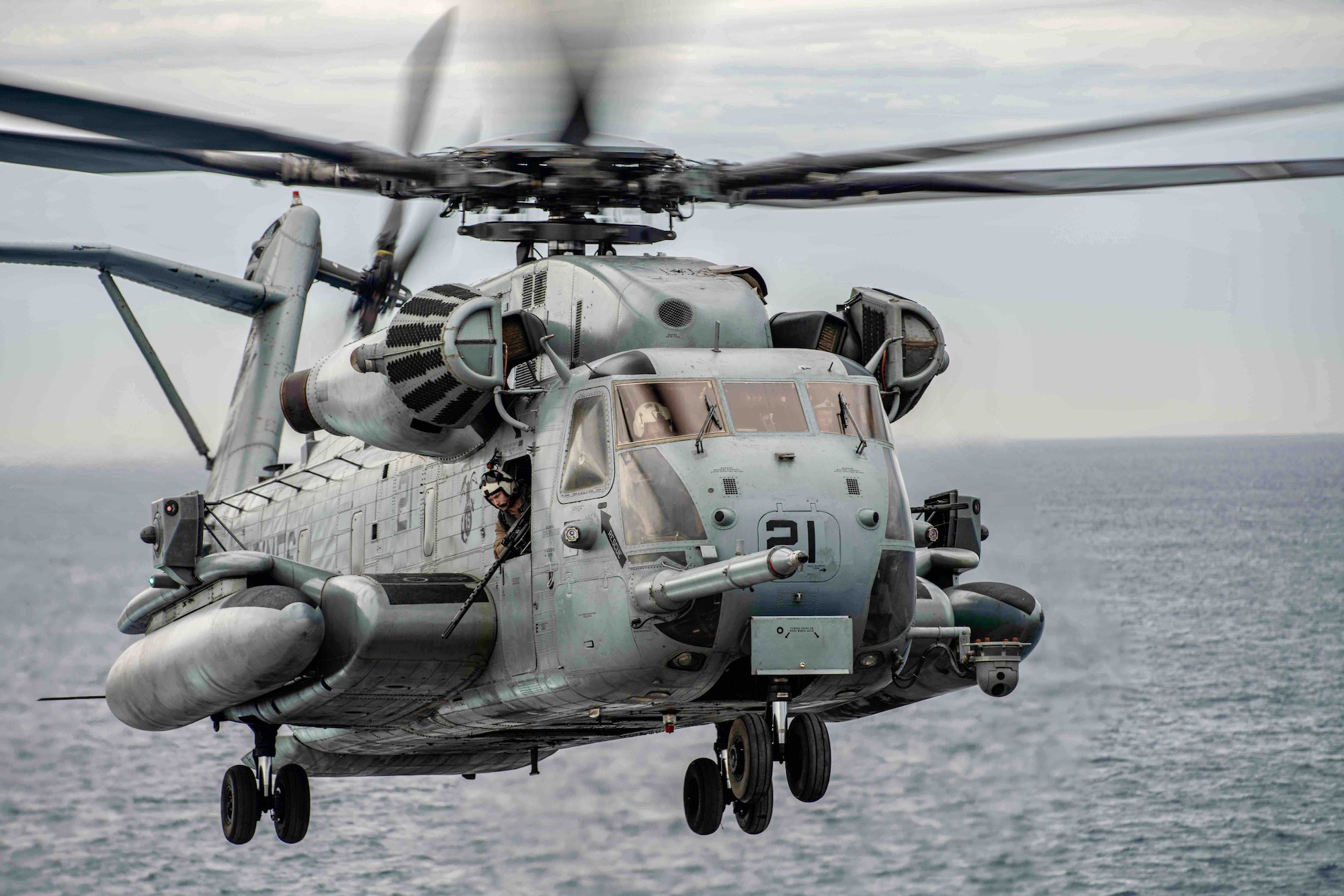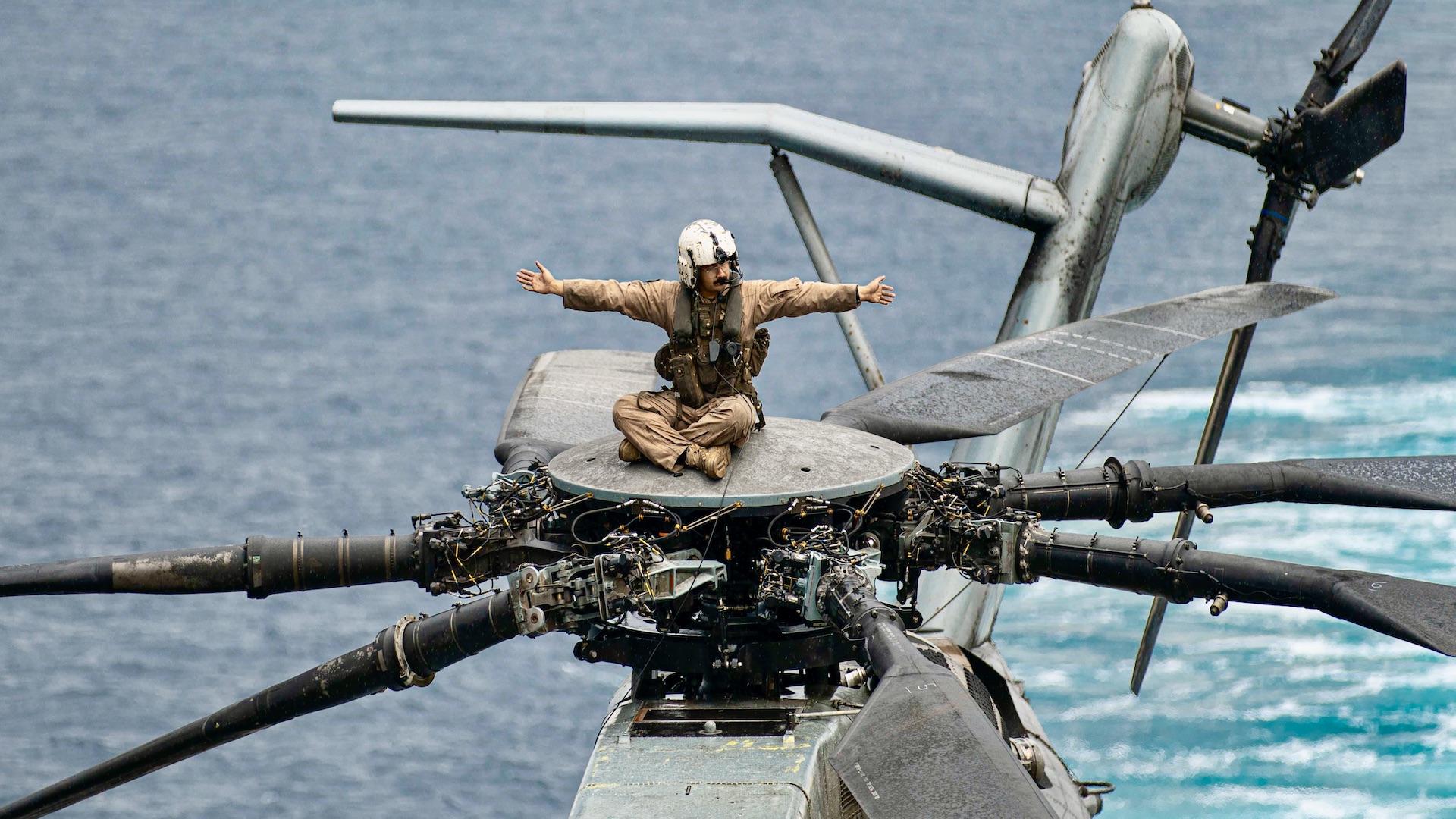The CH-53E Super Stallion heavy-lift helicopter is, by all accounts, a truly monstrous machine. A recent image taken by the Marine Corps gives an excellent visualization of its gargantuan proportions, framing its giant rotor mast in relation to a Marine sitting atop it.
The image, seen above, depicts U.S. Marine Corps Sgt. Brandon CarmonaTadeo — a Sikorsky (now a subsidiary of Lockheed Martin) CH-53E Super Stallion crew chief assigned to Marine Medium Tiltrotor Squadron (VMM) 165 (Reinforced), 15th Marine Expeditionary Unit (MEU) — sitting on top of a CH-53E rotor during pre-flight checks. The picture, which is part of a series, was taken on November 15 in the Pacific Ocean as the CH-53E undertook flight operations aboard the San Antonio class amphibious transport dock USS Somerset.

What’s immediately noticeable is how CarmonaTadeo is completely dwarfed by the size of the Super Stallion’s rotor hub. For context, the diameter of the CH-53E’s main rotor system is a staggering 79 feet. Bell’s AH-1 Cobra and UH-1Y Venom helicopters, which are also used by the Marine Corps, have much smaller main rotor system diameters measuring 48 feet, for example.
Other images taken by the Marine Corps of the Super Stallion on November 15 further underscore the enormity of the helicopter. In terms of their broader dimensions, CH-53E’s clock in at just under 100 feet long and just over 28 feet high — indicating that CarmonaTadeo was high off the ground during the pre-flight checks.


Super Stallions are also extremely powerful machines, with the ability to carry heavy loads over relevant distances. They can bear external loads of up to 9,654 pounds over a distance of 110 nautical miles, and feature a maximum external takeoff weight of 73,500 pounds. Each helicopter is powered by three General Electric T64-GE-416 turboshaft engines, each producing 4,380 shaft horsepower.

Of course, the sight of these giant helicopters framed up against personnel is by no means new, as we’ve highlighted in the past. Entering service in 1981, Super Stallions have been used extensively by the Marine Corps, particularly during the wars in Iraq and Afghanistan. Due to their heavy use and growing age, the Marine Corps is replacing its tired CH-53E fleet — of which, according to Naval Air Systems Command (NAVAIR), there are 136 in service — with CH-53K King Stallions.

The USMC took delivery of the first CH-53K in May 2018, and in April 2022 it announced that the first CH-53K had reached initial operational capability. Later in December 2022, the Navy announced that Sikorsky was cleared to begin full-rate production of the helicopter. In all, the Marine Corps plans to purchase 200 CH-53Ks, NAVAIR suggesting the type should declare full operational capability in Fiscal Year 2029.
Compared to CH-53Es, CH-53Ks are significantly more capable, particularly in terms of their ability to carry heavier loads over greater distances. However, King Stallions retain the same physical footprint as the legacy Super Stallions. You can read more about the CH-53K, including its technological and weapons capabilities, in these past War Zone pieces.
With this in mind, the sight of Marines being dwarfed by CH-53s will no doubt continue to crop up for many decades to come.
Contact the author: oliver@thewarzone.com
